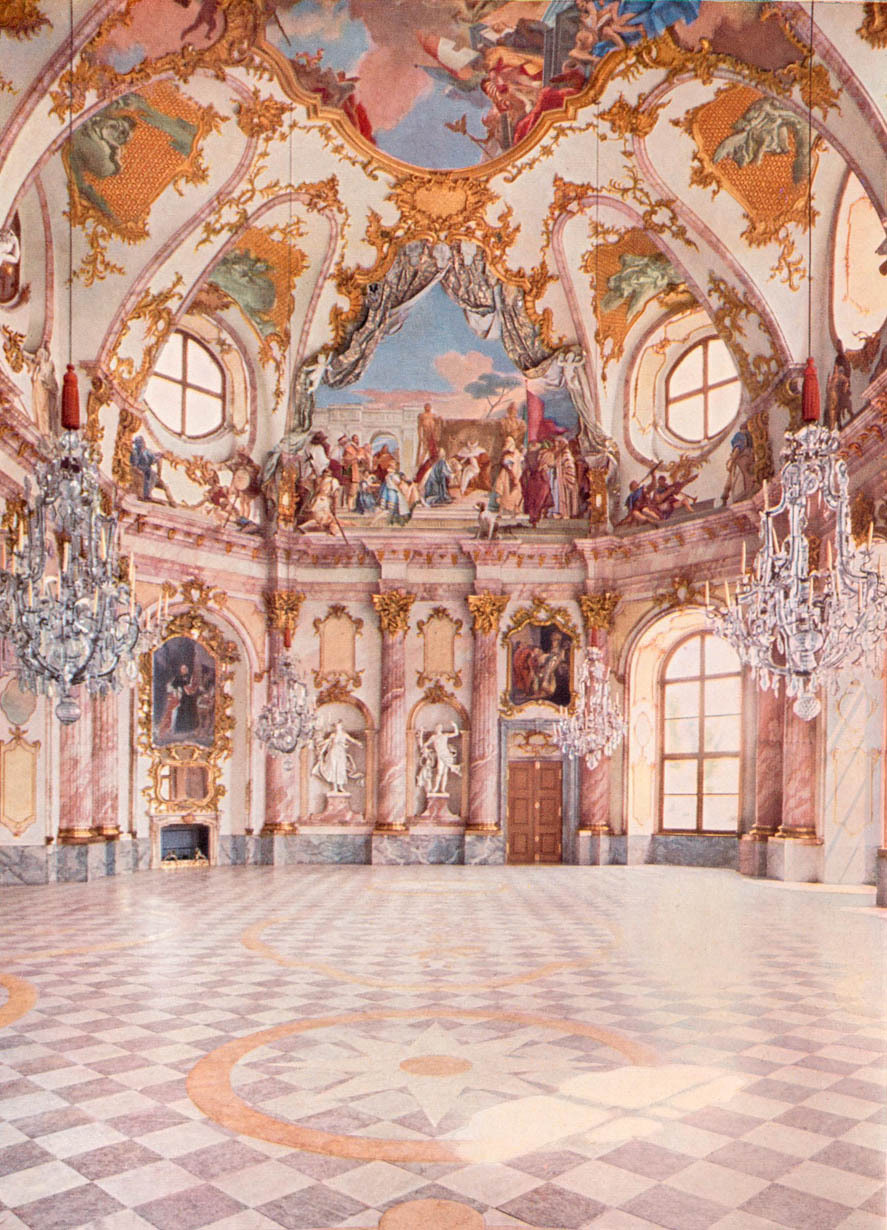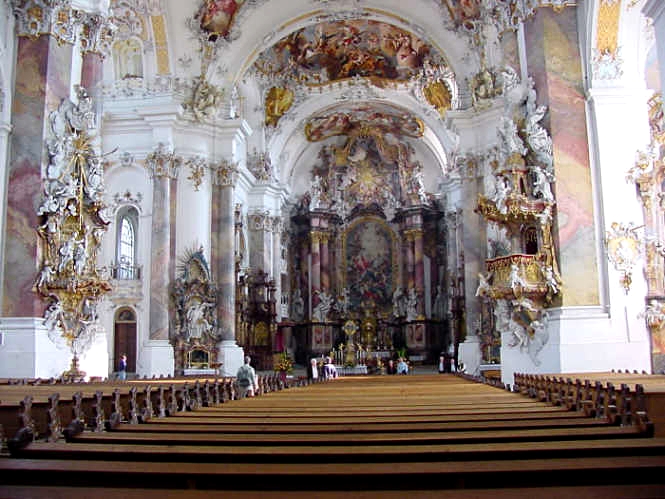The Baroque style was still around in the early 18th century but quickly transformed into Rococo, its lighter, more delicate cousin.
ROCOCO
Rococo architecture was more graceful than Baroque. The biggest difference between that Rococo prized asymmetrical forms. Rococo structures were rectangular with rounded corners and flat walls. Buildings features lots of marble
columns, domes, and arches. Doors and walls featured intricately carved and gilded friezes. Ceilings and walls were frescoed and decorated thoroughly.
 |
| Two of my favorite colors! No wonder I loved being here! |
 |
| I thought I was in a candy factory! |

 |
| Armchair, 1755 |
 |
| Mirror, ~1757 |
GEORGIAN
| Colonial Georgian house |
 |
| Column facades were constructed with wood. Notice the beautiful light and molding! |
Symmetry continued its importance in architecture through this time. Moving in to domestic architecture; the Colonial house emerges. Houses are made of brick and stone in tan, red, and white and feature side-gabled roofs, much like houses we're more used to. Georgian architecture reached a wider demographic, such as the middle and upper classes. Georgian buildings were symmetrical on the inside and out (they even had two chimneys) and featured numerous large windows and dormer windows on the top floors. These houses were embellished with moldings and dentalwork.
 |
| Georgian dentalwork- looks like teeth! |




No comments:
Post a Comment